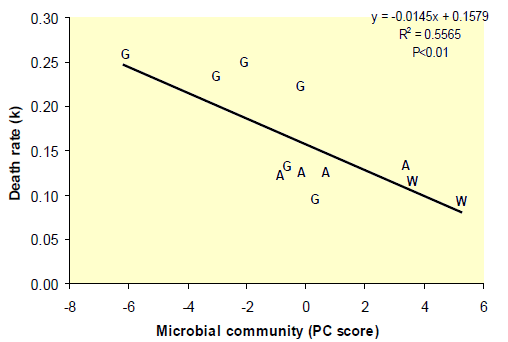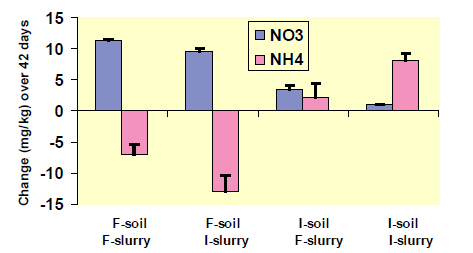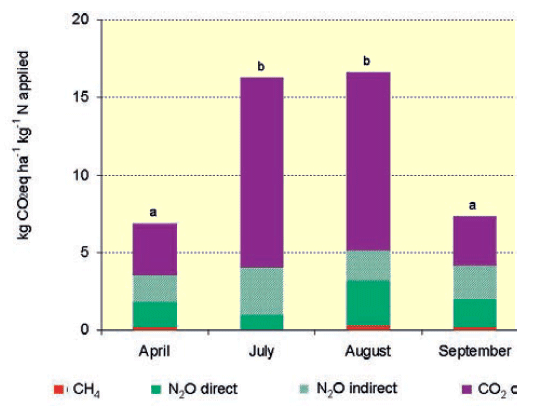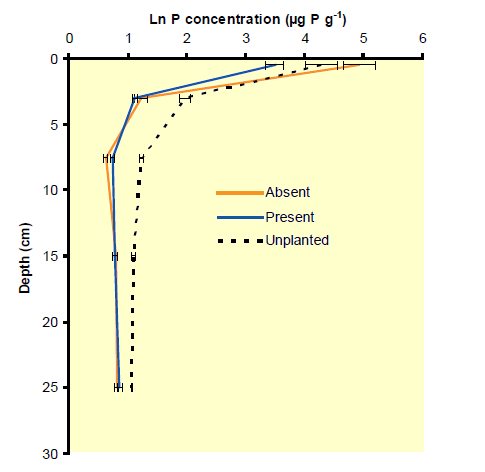



Can Soil Biology Optimise Slurry Management?
Soil husbandry advice akin to grassland and animal husbandry would be useful to help producers manage soils so that they perform better, with fewer inputs and losses, say researchers from Teagasc, Department of Crops Environment and Land- Use.Introduction
Current agro-environmental challenges can no longer be
addressed by single-disciplinary research and mitigation
approaches, since individual abatement strategies may
well be mutually antagonistic. Instead, an integrated,
multi-disciplinary strategy for environmental
sustainability in a competitive market-climate is
required. This strategy should be based on a solid
understanding of the soil processes that are the interface
between agriculture, nutrient efficiency, gaseous
emissions, water quality, and soil functioning (Harris et
al., 2011). Teagasc sought to develop their funded PhD
projects (Walsh Fellowships) by initiating a ‘cluster’ of
four integrated research projects between the Teagasc
Environment Research Centre, Johnstown Castle and
Cranfield University (UK). The cluster sought to
understand a range of soil biological processes involved
in slurry and nutrient management, including
interactions between soil microbial community structure
and survival of slurry-based microbial pathogens in soil;
the balance between soil and slurry microbial
communities in nitrogen dynamics; trade-offs between
greenhouse gas and ammonia emissions from applied
slurry and the role of soil biology in phosphorus
incorporation.
Because of the integrated nature of the cluster projects,
the results and discussion will be presented as a review
of objectives and outcomes from the cluster. As far as
possible the four projects used common methodologies,
soils and slurries.
Influence of land use and soil microbial communities on pathogen survival
It is unclear whether edaphic or biotic factors play a dominant role in governing pathogen survival, but we hypothesised that soil biology would be more influential in regulating pathogen decay than soil physico-chemical composition. Twelve soils, selected on contrasting land-use (grassland, arable and wood), soil type and management regime, were characterised physicochemically for: total exchange capacity, pH, % organic matter (OM), phosphorus; exchangeable cations; % organic C; % C; % N, C/N ratio; % clay; % silt and % sand, and microbiologically by phospholipid fatty acid analysis (PLFA). Replicate microcosms of each soil were individually inoculated with approximately 107 cells g-1 of commonly occurring slurry bacterial pathogens (Listeria, Salmonella and 2 E. coli strains). Pathogen survival data were collected by counting characteristic colonies on pathogen-specific agar over 110 days at 10oC. Triplicate counts were used to fit exponential decay curves and calculate the average death rate (k) for each pathogen. PLFA profiles were analysed by principal component analysis. Physicochemical, community and k-values were averaged per soil, and entered into a forward stepwise regression model. Regression analysis showed that microbial community composition provided the best predictor of pathogen survival for 3 of 4 pathogens investigated.
Death Rate of Salmonella Dublin in Grassland (G), Arable (A) and Woodland (W) Soils Plotted Against Microbial Community Structure.

Communities associated with soils from grasslands were the most suppressive and this was of a general rather than specialist nature, caused by interactions with the total microbial consortium within these soils, rather than with specific microbial groups.
The balance between soil and slurry microbial communities
The pathogen component of land-spread slurry is only a small proportion of its total microbial community. Other microbes present in slurry are potentially important for the mobilisation of nutrients from the slurry OM when applied to soil, but the actual contribution of slurry or soil microorganisms to nutrient cycling is largely unknown. To test this, ammonification and nitrification rates were determined in a 42 day laboratory incubation with 2 x 2 factorial experiment of soil (fresh or irradiated) and slurry (fresh or irradiated), using a standard KCl extraction and chemical determination of NH4 and NO3. Results indicated slurry microbes can contribute to soil functions, as seen from the small increase in NO3 when fresh slurry was mixed with irradiated soil (i.e. no biological activity) but indigenous soil organisms were dominant as seen from the larger changes when fresh soil was present (Fig. 2).
Change in NH4 and NO3 in Mixtures of Field (F) and Irradiated (I) Soil and Slurry. Bar = s.e. n=5.

Effect of slurry composition, application technique and timing on gaseous emissions
Agriculture in Ireland is the main source of ammonia
(NH3) and contributes 29% of greenhouse gas (GHG)
emissions. However, NH3 abatement strategies to
reduce volatilisation of NH3 might increase N
availability and so affect the production of nitrous oxide
(N2O) from these soils. Manure OM is also likely to
increase C storage in soils, compared to inorganic
fertilisers, but also increases rates of soil respiration,
leading to a possible net CO2 loss from amended soils.
It is clear that the fate of slurry OM and N are closely
linked and that GHG mitigation strategies need to
consider both C and N dynamics concurrently.
To evaluate mitigation options, gaseous emissions of
CO2, NH3, CH4 and N2O from field applied slurry and
inorganic fertiliser were determined over a 15 month
experimental period in a randomised block design (n=3)
following application on four different dates from
spring to autumn. Cumulative fluxes for the entire
experiment were analysed using ANOVA and the
impact of timing of application investigated using a
Repeated Measures ANOVA.
CO2 was the main greenhouse gas emitted from slurry
amended soils, regardless of slurry dry matter content or
application technique.
Cumulative Fluxes of GHG Over the First Three Weeks Following Slurry Application. Columns with the Same Letter are not Significantly Different, P>0.05.

There was a 55% reduction in GHG emissions by switching from summer to spring application (Fig 3) as soil processes were limited by low temperature and high soil moisture, with no trade-off between NH3 and N2O. Slurry application technique and the timing of application are key in NH3 abatement strategies. Switching from summer to spring application was the best mitigation option reducing both NH3 and GHG. Spring application reduces gaseous N losses in a period where the N requirement of the herbage is the largest, optimising N fertilisation and reducing the need for a supplementation with mineral N.
Phosphorus incorporation into soil
There is concern about the potential risk that fertilisers
pose for water quality as accumulated P at the soil
surface is susceptible to mobilisation due to overland
flow. Little information is available on the ability of the aboveground or belowground communities to effect the
distribution of P in the soil profile.
Experimental mesocosms (27 x 38 x 35 cm) were filled
with two soil layers, the lower 30 cm from a low
fertility pasture (Morgan’s P, 2.4 ug g-1) covered by a
top layer, 1 cm, from a high fertility pasture (19.1 ug P
g-1). Both soils were sieved to remove earthworms and
eggs. Mesocosms were established in a 3 x 2 factorial
experiment containing plants (monoculture or a 4
species sward), earthworms (present or absent) and
fertiliser (slurry or inorganic). The distribution of P
down the soil profile was measured after 18 months (n =
5).
A decrease in labile inorganic P in the 0 – 5 cm layer
occurred after the application of slurry but not inorganic
fertiliser. Earthworms significantly reduced nutrient
concentrations at the soil surface, thus promoting a
more uniform distribution of P down the soil profile, but
whether this translates into greater P incorporation
belowground still remains unclear as there was not an
apparent increase at other depths (Fig 4).
The Distribution of P to a Soil Depth of 30 cm in the Presence and Absence of Earthworms and an Unplanted Control with no Earthworms. Bar = s.e. n=5.

Conclusions
To manage soils so that their biological communities provide greater services, with less inputs and similar or fewer losses, soil husbandry advice akin to grassland and animal husbandry would be beneficial and offers great potential for improved agricultural management. This cluster has shown the need to incorporate: a suppressive capacity test, maintenance of the soil microbial community, matching timing of farm practice events to soil processes, and consideration of the wider soil biological community, in soil husbandry advice.
April 2012


